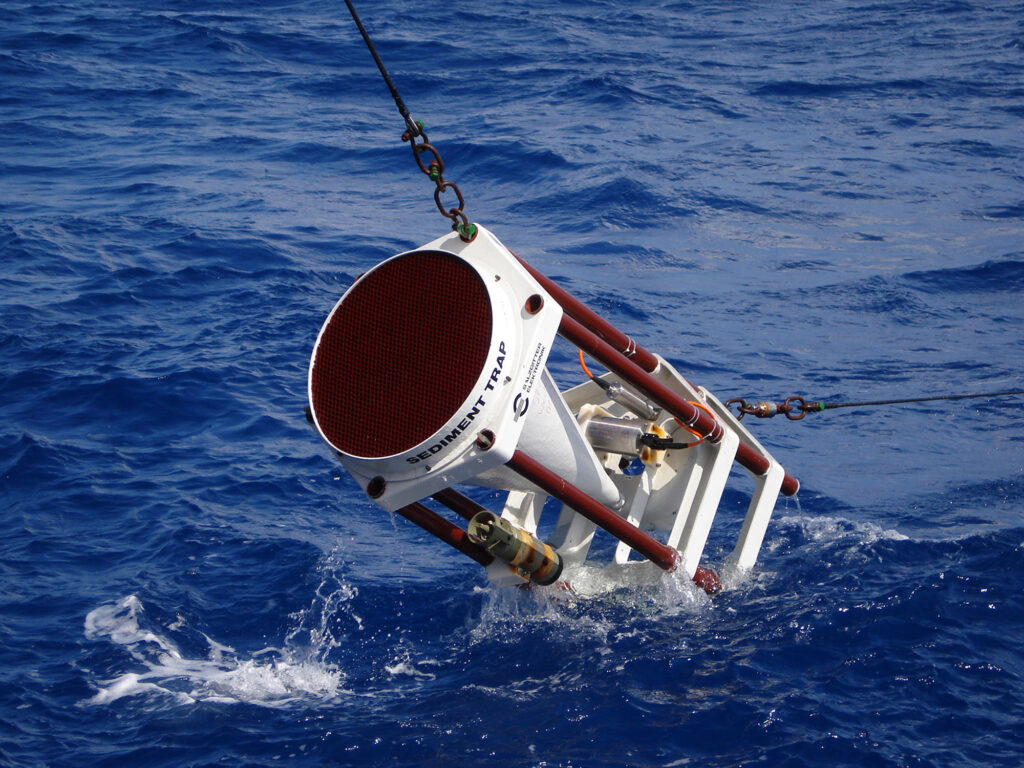DEEP WATER: 5.4 Million Tonnes Of Microplastic Rubbish Each Year In Atlantic, Says Study
A shocking study of pollution of the Atlantic Ocean’s deep waters has revealed that it soaks up more than five million tonnes of microplastics each year.
The first-ever observation of long-term records from deep water layers has shown that around 5.4 million tonnes of the stuff are accumulated in one year.

For the first time, researchers from the Leibniz Institute for Baltic Sea Research Warnemunde (IOW) have analysed a long-term sample series on microplastic pollution that they obtained from the Northeast Atlantic.
The study was conducted in the city of Rostock in the German state of Mecklenburg-Western Pomerania.
The study – led by scientists Joanna Waniek and Janika Reineccius – involved samples from a water depth of 2,000 metres (6,562 feet) and placed its focus on number, size, material and particle origin evaluation from bits collected between 2003 and 2015 in the Madeira Basin in South America.
The results – which showed that the most common plastic materials were polyethylene and PVC – studied how long microplastics take to sink to the bottom.
Experts believe the results will take science closer to understanding their effect on the ocean.
IOW scientist and lead author Janika Reineccius stated that major knowledge gaps exist about microplastics in the ocean regardless of their presence in every ecosystem on the planet.
The variety of games in online casinos can be compared to the analysis of various samples of microplastics that were collected by researchers from the northeast Atlantic. As in the case of microplastic research, the casino provides a wide range of bonuses and promotions, which are different in terms and appearance, reminiscent of different types of microplastic materials.
Just as the study focused on assessing the size, material and origin of microplastic particles, casino players have the option of choosing games with different themes, styles and features. For example, they can play slots, mini roulette online, blackjack or poker, each of which has its own unique features and atmosphere, just as different types of microplastics have their properties and source of origin.
Just as experts try to understand the impact of microplastics on the ocean, a casino can offer winnings that can affect the emotional state of players. They are looking for their profit, just as science is looking for answers to questions about microplastics in the sea.

Reineccius said: “Yet microplastics are dangerous to the marine environment in many ways.
“Microplastics can adsorb certain toxins and transport them over long distances, both horizontally and vertically.
“A wide variety of organisms ingest such ‘poisoned’ particles, which, on top of that, can significantly limit the intake of nutritious food.”
Study co-author Joanna Waniek – in charge of the Azores Observatory Kiel 276 in the Northeast Atlantic for more than 20 years – added: “Moreover, not all microplastics are the same.”
She explained: “To reach a better understanding of how fast and how much microplastic sinks through the water column into the ocean depths, we need to study not only particle size, but also what material the particles are made of.
“There is an enormous range of chemical and physical properties that influence both, sinking behaviour and particle life time.
“This, in turn, decisively influences the residence time in the water column and thus the availability to the affected fauna.”
Material collected from sediment traps attached to 5.2-kilometre-long (3.2-mile-long) mooring lines revealed microplastics presence in every single one of the 110 evaluated samples.
The study heads explained that between one and about 3,000 plastic particles sink into the Atlantic deep sea per day in just one square metre.
Reineccius said: “Extrapolated to the entire Atlantic, this equates to an input of about 5.4 million tonnes per year.”
Waniek added: “The maximum amount of microplastics can account for up to eight percent of the total sinking material.”
Through Raman spectroscopy, Reineccius and Waniek detected the following types of plastic: polyethylene, polyvinyl chloride (PVC), polypropylene, polystyrene, polyethylene terephthalate (PET), Plexiglas, polyamide, Teflon and copolymers of polyethylene and polypropylene.
Additionally, they found out that the composition of polymers changed considerably between sampling years, but polyethylene always accounted for at least 70 per cent in all samples, while PVC with 20 per cent was the second most common.
All other polymers occurred in significantly smaller amounts.
The researchers suspect that the rock dust and plastic particles were transported through the atmosphere from northeast Africa and the surrounding regions, while no corresponding correlation could be confirmed for the second most common polymer, PVC.
Reportedly, a seasonal dependency with high winter inputs and significantly lower quantities in summer could be found, which according to the scientists is due to seasonal factors.
Both Reineccius and Waniek summed up: “To identify more patterns and understand processes more clearly, the long-term sampling definitely needs to be continued. And actually, we also need more long term sampling stations.
“Our analysis is the first study worldwide to show a time series of marine microplastic pollution and thus is a very important first step to understand the origin and transport pathways of different microplastics into the depths of the open ocean.”
The study was published in the international peer-reviewed journal Environmental Pollution on 20th April 2022.



